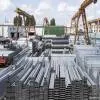Despite historical factors, this is not the time to write off the Indian infrastructure sector
The infrastructure sector is considered a very vibrant space and there are compelling reasons for the same. The industry works across 250 subsectors with linkages across sectors. Thus, it is considered to be a sector with a high amount of capital gearing. In simple words, with such a deeper linkage between subsectors, even one rupee invested in the infrastructure sector results in opportunities generated worth 10 times.
Broadly, the infrastructure sector can be divided into real estate and infrastructure construction. However, despite such high vibrancy, higher gearing and consistent focus of the Government (in terms of reforms and financial assistance), many investors shy away from investing in listed infrastructure companies. Naturally, there are historical factors why investors feel ‘once bitten, twice shy’. With the kind of wealth erosion that has happened in the Indian construction contracting and realty space (and almost all top companies hardly provide returns), investors have provided a cold shoulder to the infrastructure space for over
a decade.
Indeed, since the 2008 global meltdown, not many realty and infrastructure companies have been able to create wealth for investors. Just to put things in perspective, the Nifty Realty Index, introduced on August 30, 2007, with a base of 1,000, is trading at 521 today. After the introduction of the index, there was a brief period when it moved northwards to touch the levels of ~1,780 in February 2008. However, after that, it has remained under constant pressure. In all, hardly any broader wealth creation has happened in the Indian real-estate sector. There were smaller up-moves witnessed in the sector. However, despite the fact that benchmark indices witnessed significant gains, the infra construction and realty space remained subdued. The
story has been no different for the larger players.
That said, such examples of underperformance notwithstanding, there are certain recent examples like GR Infraprojects, which got listed a few months ago. And if the response to the IPO is anything to go by, the infrastructure segment looks like a great investment opportunity.
The IPO, which was issued at `837, is currently trading at `1,885, showing gains of 125 per cent in just three months. In a nutshell, there are great opportunities available in the construction contracting space as well and investors need to take a deeper look at the same. There would be a counter argument that it is a secular bull phase for Indian equity markets, and hence the improved performance in the infra construction space as well.
While one can continue to debate over available opportunities and past wealth erosion, we believe the Indian infrastructure space will remain vibrant. And this vibrancy will extend to subsectors and allied sectors. Policy reforms by the Government focus on both urban and rural development and helping the sector in terms of financial viability are some longer-term drivers for the sector. The way construction companies are building nations, it is important to understand they can build value for investors as well.
Now, let's take a closer look at the macroeconomic scenario.
Macroeconomic parameters
in India
Almost all countries across the world have been affected by COVID-19. A lot has changed in the past 18 months. In March 2020, when the pandemic had just hit India, it was not very clear how it would impact us. With limited knowledge about the virus, there wasn’t even clarity on how to treat a patient. While precautionary steps were taken by the Indian Government, two waves have severely affected India. However, now, there are vaccines that are proving to be very efficient and the vaccination drive is being undertaken at a rapid pace. This has resulted in the social life of people and even economic activity slowly coming back on track. That said, the pandemic has left an impact on many macroeconomic factors.
Let’s take a look at how the different parameters stood for the past year.
The first and the foremost factor that was affected at the start of the pandemic was GDP growth. In Q1FY21, GDP declined by
23.90 per cent. However, after that there has been a steady recovery.
For Q2FY21 it declined by
7.40 per cent and gradually increased from 0.50 per cent in Q3FY21 to
1.60 per cent in Q4FY21. The recovery further improved and in Q1FY22, the 20.10 per cent
growth, though on the low base of Q1FY21, indicates betterment
(see GDP growth graph).
The Index of Industrial Production (IIP) has also witnessed improvement over the past four quarters. In Q1FY21, the IIP declined by 35.50 per cent but eventually improved to stand at 7.7 percent in Q1FY22. While the IIP witnessed improvement, inflation numbers also remained under the tolerance levels of the Reserve Bank of India (RBI) (see chart and CPI figure charts).
With inflation levels remaining under the tolerance levels of RBI, even the repo (at 4 per cent) and reverse repo rates are at historically low levels. This has resulted in abundant liquidity in the system that eventually benefitted the economic scenario.
The above parameters also indicate some positivity coming to the Indian markets. Loan growth has been consistent and, most important, cement volumes have also increased to double-digit growth.
As the economic parameters improved, so did earnings for India Inc, as the following chart shows.
After remaining under pressure for almost five quarters, the performance of India Inc has started to improve from Q4FY21. Significantly, there is consistent growth visible in EBITDA margins as well. With operating leverage coming into play, PAT growth has been much better. And if macro factors remain supportive, this growth will be sustained.
India Inc in a multiyear earning growth cycle?
As we stated, profit/earnings expansion drives the markets most of the time. And for the past three years, India Inc has remained an average performer. However, after four years of flat earnings growth, the country seems finally poised for a multiyear earning growth cycle. To put the numbers in perspective, large cap (Nifty 50) earnings are expected by consensus to grow 42 per cent in the current fiscal year (FY21-22, ending March 2022), and 14 per cent in
FY 22-23. This is already leading to a re-rating of the multiples Indian markets trade at, and provides a downside cushion to corrections. The estimate of the Nifty consensus earnings per share (EPS) (showcased on a Bloomberg survey) for FY21-22 currently stands at `750 and `850 for FY 22-23. Along with the Nifty 50 earnings, even midcap and small cap are likely to post good earnings growth. In FY22, the consensus midcap EPS is estimated at `1,213 (from `960 in FY21). In small cap, the EPS for FY22 is estimated at `430 as against `177 in FY21.
The following table gives an idea about sectors related to construction and the contracting segment.
Equity indices – broader/secular rally
With economic indicators providing positive signals, even equity benchmark indices touched an all-time high. After witnessing a steep decline in March 2020, hitting a low, Indian benchmark indices witnessed strong recovery. The following chart clearly indicates how strong the rally has been as Nifty is trading at 17,900.
While benchmark indices have surged significantly, broader indices have also witnessed significant gains. Further, the strength is evident from the fact that even the MSCI India Index remained resilient. For the past 18 months, there has hardly been any meaningful correction. And the resilience of the Indian equity markets is visible from the fact that India has outperformed its emerging market peers.
To put the numbers in perspective, the MSCI Emerging Market Index has moved to 1,270 to date from the level of 758 in March 2020, providing returns of over 67 per cent. It is now trading at 1,927 from the level of
876 in March 2020, resulting in more than 119 per cent returns. Outperformance has been much more significant since February 2021, when the MSCI EM Index witnessed marginal decline, but the MSCI India index has remained strong. When indices move upwards, this is mostly backed by earnings. As earnings growth picks up, the indices move accordingly. But there is another factor – along with earnings growth, P/E expansion is also occurring. And in a bull phase (which Indian markets are now witnessing), 75 per cent of the move is backed by P/E expansion.
Other economic factors also show a positive trend
While we have spoken about the Government taking the right steps to support the economy, public finances should also be supportive. And on this front, GST collection, which was affected during the pandemic, started to show an improvement.
The following table shows the month-on-month changes in
GST collection.
While the macroeconomic data is sending a positive signal, even the sectoral data points are indicating positivity. Let’s take a look at the factors emerging from various sectors.
Realty – volumes start
to improve
Realty prices have remained stagnant for the past seven years in key Indian markets. Even sales volumes declined or remained stagnant. Everyone expected that COVID-19 would further affect the realty segment. However, things turned out to be different. The culture of work from home (WFH) and savings on account of the lockdown and restrictions resulted in better demand for the housing sector. The benefits provided by state governments in terms of reduction in stamp duty and registration charges also helped the sector revive on the volume front. With prices remaining stagnant and interest rates staying at decade lows, the realty sector is expected to benefit from end-user demand. And end-user demand is what provides sustainable growth to any sector.
All considered, the realty segment is on the verge of revival. Reforms like RERA, GST and demonetisation have resulted in consolidation in the sector. We believe larger players with a clean balance sheet (lower debt levels) and a focus on affordable housing are likely to be major beneficiaries going ahead.
Cement Sector – volume and realisations improve
Cement is another core sector that derives demand from the realty and construction sector. And volumes have started to increase slowly and steadily.
The following chart clearly
shows how production and volumes have increased.
While the pan-India average cement price in 4QFY21 was flat quarter on quarter, it was still up
3 per cent YoY, led by price hikes across regions in March 2021.
We opine that realisation will rise by 2 per cent YoY to `4,900-4,950 per tonne. Apart from that, operating leverage benefit (from higher volumes), coupled with higher realisation, should offset the rise in fuel costs resulting in a marginal increase in estimated EBITDA per tonne going ahead.
Steel – super cycle in the making?
If we examine the performance of steel stocks, it was a difficult period for some over the past five years. Companies have gone in for bankruptcy and been eventually referred to the National Company Law Tribunal (NCLT). Slower volume growth, lower realisations and high debt on the balance sheet resulted in poor performance. However, the scenario has improved over the past 18 months. Prices started to improve in the second half of CY2020. Along with improvement on the global price front, the Indian Government also provided sops in terms of import duties (supporting the sustenance of domestic prices).
While we all know steel is a cyclical industry, leading manufacturers are of the opinion that it will be a super cycle this time. There are various factors behind such claims. In the past century, the world has witnessed such super cycles after key events such as rapid industrialisation in the USA, rearmament before World War 2, rebuilding economies after the war and the sharpest upcycle powered by China’s industrialisation. Lasting anywhere between five and 15 years, super cycles coincide with large-scale urbanisation, industrialisation and massive infrastructure spend.
Currently, the global environment is characterised by supply inelasticity, demand surge, improved market sentiment and large-scale public expenditure on commodity-intensive infrastructure. And we believe steel as a commodity is a natural beneficiary. According to a leading manufacturer in India, the global energy transition towards renewables provides a huge opportunity for the steel sector, with demand expected to rise 7x to around 100 million tonne just from the renewable sector. With the Indian Government focusing on infrastructure, rapid urbanisation and the renewable sector, the steel sector is also set for strong growth. While metal stocks (including large cap) have provided returns in multiples over the past one-and-a-half year, the commodity cycle seems to be much stronger this time. We wouldn’t be surprised if the equity rally and commodity cycle move in tandem, the way India had witnessed during the 2003-2008 period.
Infrastructure – execution gathers momentum
As we have already discussed, cement, steel and realty are all related to infrastructure execution. The performance of the Indian infrastructure sector was marred by many issues like lower financial viability, lower private participation and slower capex by private companies. Apart from this, another issue has been the delayed execution of projects, owing to factors like land acquisition delays and rising costs. Many projects were in arbitration, which was another major setback. However, things have changed
for the better and the infrastructure sector seems to be on a path
to revival.
With one of the best central ministers at the helm of the Ministry of Road Transport and Highways (MoRTH), execution has been at its best. Awards in the roads sector had peaked in FY18 with the National Highways Authority of India (NHAI) granting 7,397 km in orders and have again started to pick up pace. Orders have been better than expected in the roads sector, with a strong bid pipeline in place. (They have been weak for the past two years.) The strong ordering momentum is expected to continue into FY22, given the land acquisition work done by NHAI.
The following chart shows that road construction per day has improved significantly in FY21.
With regard to HAM projects, unlike the general perception, declining interest rates have turned out to be a negative for road players. This is because they carry a negative spread on the debt of HAM projects. However, on a positive note, in future, project returns would now be linked to the marginal cost of funds-based lending rate (MCLR) rate rather than the bank rate, thereby addressing the negative spread concern. Order book positions remain robust and should lead to strong execution over the next two to three years.
While everything seems to be falling in place for the infrastructure sector, financial viability and private participation are two important challenges. And here, the new National Monetisation Pipeline (NMP) will play a vital role.
National Monetisation Pipeline – another positive
In exact words, “asset monetisation, as envisaged here, entails a limited period license or lease of an asset, owned by the Government or a public authority, to a private-sector entity for an upfront or periodic consideration”.
The strategic objective of the asset monetisation programme is to unlock the value of investments in public-sector assets by tapping private-sector capital and efficiencies. The capital can thereafter be leveraged for augmentation and greenfield infrastructure creation. Asset monetisation, also commonly referred to as asset or capital recycling, is a widely used business practice globally. There is already an established track record of investment by institutional investors and funds in mature economic infrastructure projects such as toll roads, ports and airports in North America, Europe and Australia. This consists of a limited period transfer of performing assets (or disposal of non-strategic, underperforming assets) to unlock ‘idle’ capital and reinvest the same in other assets or projects that deliver improved or additional benefits.
How large would the NMP be?
The NMP estimates aggregate monetisation potential of
`6 lakh crore through core assets of the Central Government over FY22-FY25. The top five sectors (by estimated value) capture around
83 per cent of the aggregate pipeline value. These include roads
(27 per cent), followed by railways (25 per cent), power (15 per cent), oil and gas pipelines (8 per cent) and telecom (6 per cent).
Further, this wagon wheel shows how the different sectors are expected to contribute going ahead. A positive factor is that all segments are being considered for monetisation. Other assets in the pipeline include airports, ports, warehouses, hospitality assets and urban infrastructure. About `88,000 crore of asset monetisation is expected to be completed in FY22 itself. This is likely to provide much-needed impetus to the infrastructure sector. Thus, a lot of value building is expected to happen in the Indian infrastructure space.
Building value – what historical performance suggests
At the beginning of this article, we had mentioned that it is the historical performance of Indian construction companies that makes investors cautious about committing investment for the long term. However, we feel there is a need to be selective in this space, as returns generated by consistent players from the infrastructure, realty and building material segments are good. To put things in perspective, we have carried out an exercise to examine the returns generated by the companies we had narrowed down through our Top Challengers
list in 2019 over the past three years, as follows:
Year 1: October 1, 2018, to September 30, 2019
Year 2: October 1, 2019, to September 30, 2020
Year 3: October 1, 2020, to September 30, 2021
We checked the performance of these companies (from the construction and building material sectors) on the bourses. And the data that emerges is very interesting. Evidently, it wouldn’t be correct to say that infrastructure and its subsectors are not helping investors create wealth. If we take a look at the performance of ceramic tiles and paints companies, for instance, value creation has been really good.
Here, we should focus on the CAGR returns generated by the companies over the three years. Almost all the companies have performed on this parameter. One may argue that last year’s performance has resulted in such returns. However, in the case of paints companies, one can see that it has been a consistent performance over all the three years. In the case of tiles companies, the 2020 returns were negative. However, it was an overall industry scenario. Remember, anything that provides at least double than risk-free returns is considered a good investment. And paints and tiles companies seem to have created value for investors.
Realty companies
For realty companies, it has been one of the most difficult decades in terms of financials. But again, on the three-year basis, the price performance seems to be good. It is true that the majority of gains were added in the past year. However, the CAGR of companies like Godrej Properties, with 58.20 per cent, is obviously good. The list clearly indicates that cleaner and leaner balance sheets have posted better returns. Again, it proves that investment with a longer-term horizon provides decent returns. There are a few failures (HDIL) but such investments could be avoided with some basic research.
Cement companies
In case of cement, too, there are a few companies providing consistent returns. Despite being cyclical in nature and a so-called matured industry, the CAGR of companies like JK Cement and JK Lakshmi Cement has been really ahead of many growth companies. Even the 14 per cent CAGR for the larger players is in line with equity kind of investments (index returns).
Construction and contracting
The construction and contracting space is considered as one of the most volatile amid the sectors we have considered. The returns generated by players are mostly negative or in most cases single digit. But even in this space, there are companies like KNR Construction, PNC Infratech and HG Infra Engineering with a CAGR higher than 40 per cent. Apart from this, recently listed scrips like that of GR Infraprojects have provided a great amount of confidence to the investor fraternity. This suggests that if infra companies are offered at the right valuations, it would result in great value creation for investors. We believe there are good opportunities available in the infrastructure space.
Apart from the few sectors mentioned above, other subsectors like pipes, wood and laminates as well as a few retail stories related to building material are expected to be the next places to watch for. Astral Poly, Prince Pipes, Finolex Industries and APL Apollo are some examples.
As they say, you may find a multi-bagger from slow growing sectors in a sort of cyclical business and mundane segment. Therefore, it is surely not the time to write off the infrastructure sector at its current level – it’s time to find real value in the segment.




















